Chest pain and fever are quite frequent complaints of the female half of humanity. , which is accompanied by a temperature of 37 ° C and above, will make any woman worry about her health.
How to understand whether it is worth sounding the alarm and immediately run to the doctor, or what happened is just a variant of the norm. So, the reasons for the increase in temperature, accompanied by chest pains, are discussed below.
Growing up is a difficult period for a girl, when her body is rebuilt, turning from a child to an adult. Strong hormonal surges affect growth, coordination, even character. Due to an increase in the concentration of progesterone and estrogen, active growth of the mammary glands begins. Their ducts lengthen and branch, the glandular tissue grows, the fatty layer accumulates.
Nerve fibers in the glands grow more slowly and often do not keep pace with the growth of the gland, which forces them to be in a tense, tense state, and gives unpleasant sensations to the owner. In adolescence, girls often begin to hurt their breasts and nipples, the sensations can be aching, pulling, burning. In this case, the body temperature can rise to subfebrile, and reach 37.0-37.5 ° C. Sometimes nausea and vomiting are added. These unpleasant sensations are especially pronounced a few days before the onset of menstruation.
Unfortunately does not exist effective treatment this state, since it is the norm and is necessary for the development of the girl. In severe cases, doctors recommend nonsteroidal anti-inflammatory drugs and pain relievers to relieve symptoms. Usually, the manifestations of cyclic mastodynia cease or decrease to insignificant by 15-18 years. But sometimes symptoms can return during pregnancy or during menopause.
Lactostasis
Often from nursing mothers you can hear complaints that the chest hurts, and the temperature has risen. Lactostasis, that is, milk stagnation, is a very common phenomenon, especially in women who have given birth for the first time. As a rule, this leads to:
- improper or too rare attachment of the child
- wearing a tight bra
- traumatic chest compression during sleep
In rare cases, there are physiological features - narrowing of the milk ducts, high density of mother's milk or sluggish sucking of the baby.
If a nursing mother has a sore breast, you should gently massage it, especially the lobes where there is tension or hardening, and try to express milk as much as possible by hand, using a breast pump or by correctly attaching the baby. Launched lactostasis, if an infection enters the chest, can turn into a much more serious disease.
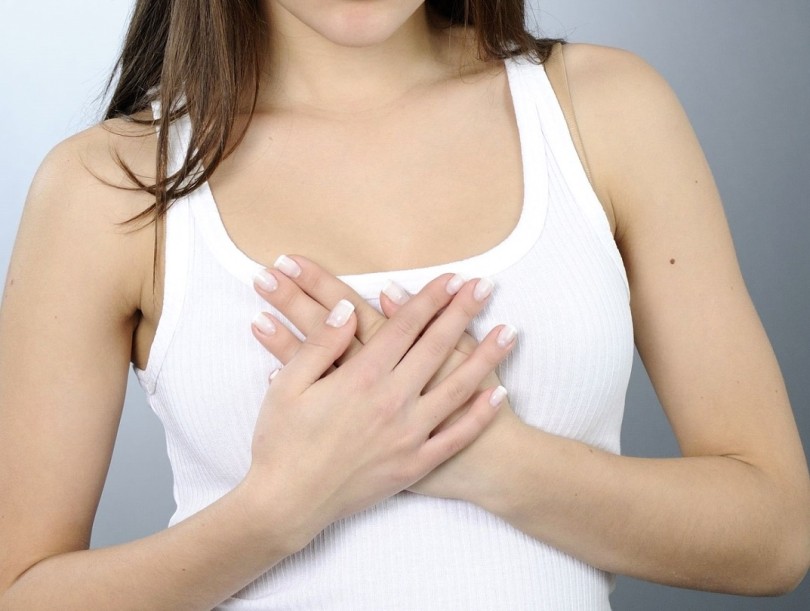
Lactational mastitis
Since small cracks in the nipples are almost inevitable during feeding, it is recommended to pay extra attention to breast hygiene. If a bacterial infection enters through the crack, breast milk is an ideal medium for its development and spread. The signs will be:
- a sharp increase in temperature (with lactostasis, it usually keeps within 37-38 degrees, in rare cases up to 39, and with mastitis it can exceed 40 degrees)
- redness of the skin of the chest
- strong pain
Mastitis is characterized by a local lesion of the gland, so it should be suspected when one breast hurts and the temperature rises to 37 ° C.
Treatment for mastitis should be started as early as possible, as the infection develops very quickly. If you suspect mastitis, in no case should you give milk to the child, but it must be expressed. In addition, antibiotic therapy should be started. It is better to immediately consult a doctor for the timely selection of the drug and its dosage. Advanced mastitis can lead to the appearance of an abscess and require surgical intervention.
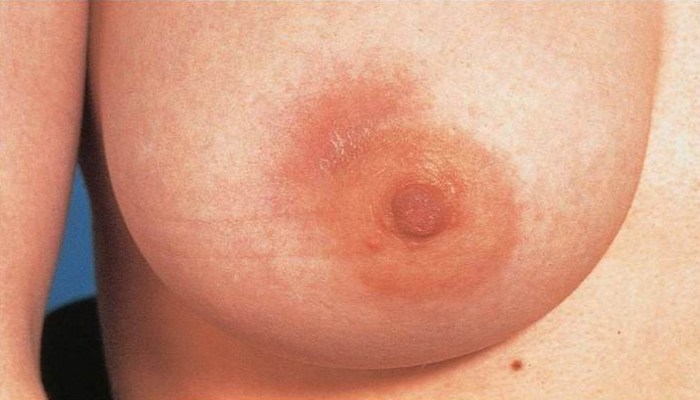
Similar to lactation mastitis in breastfeeding women, inflammation can occur on the breasts of women of any age. The infection can penetrate through damage to the skin, wounds, cracks, breaks. In the vast majority of cases, the causative agent of the disease is Staphylococcus aureus. Mastitis should be suspected even if the temperature is 38 ° C and the chest hurts. And even more so if:
- the temperature jumped sharply to high values \u200b\u200b(39-41 ° C)
- swelling appeared on the chest
- redness
- there is a burning sensation and itching
- strong pain
Affected, as a rule, one mammary gland, left or right. The temperature will help to determine the location of the lesion, from the chest literally "glows with heat" in the affected area, the touch is painful. Discharge from the nipples, sulfurous or purulent, may appear.
If you suspect mastitis, you need to see a doctor as early as possible, self-medication can lead to serious consequences. Until the removal of the affected lobe of the breast or death as a result of the developed sepsis (bacterial infection of the blood). Antibacterial and detoxification therapy is mandatory, it is important not to self-medicate and not rely on untested methods.
Breast injury
Sometimes, although not often, the breast can be injured. For example, as a result of an accident or traffic accident. At the same time, after an injury, the chest hurts, the temperature rises, and seals can be felt in the chest in places where the fatty tissue of the breast is affected. Over time, necrosis of this adipose tissue occurs. In this case, the affected area is very painful, intense itching or burning may be felt.
General intoxication of the body occurs, there may be nausea or vomiting, general malaise, decreased appetite. In place of dead tissue, a scar is formed, while the mammary gland can change shape, a lump may appear or a nipple may be drawn in. These symptoms resemble signs of breast cancer, so a doctor's consultation is necessary to rule out breast cancer.
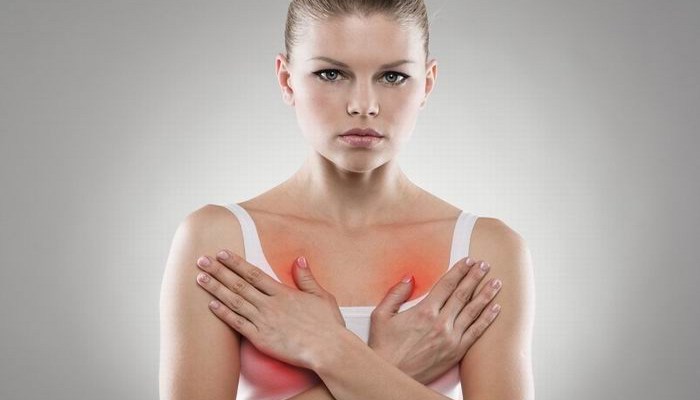
Breast tuberculosis
This rather rare disease occurs, most often, as a secondary lesion in women who have been suffering from pulmonary tuberculosis for a long time. Should alert:
- change in the shape of breasts
- the appearance of sores on the skin
- aching or bursting pain
- pulmonary symptoms (cough, sputum discharge, chest pain, shortness of breath).
The diagnosis must be confirmed by lung x-ray and biopsy. Treatment is prescribed only by a doctor, and it includes long-term (from a year or more) complex therapy, supportive therapy and, if possible, medications that relieve symptoms.
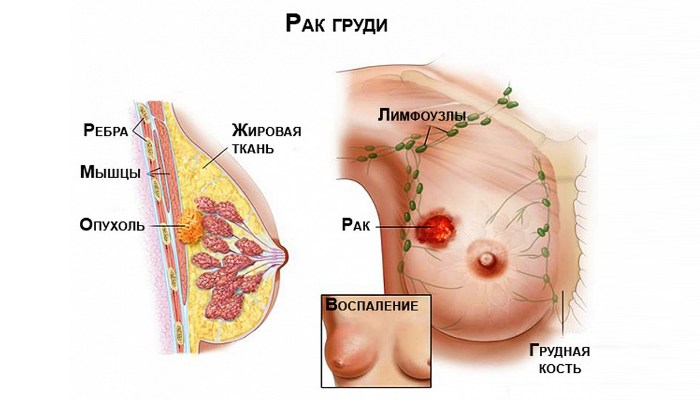
Breast oncology
In recent decades, very sad statistics of women with breast cancer have developed in our country. Often, women don't pay attention to disturbing symptoms until it's too late. You should consult a doctor if:
- chest hurts
- temperature 37-38 ° C
- the shape of the breast has changed, the left and right mammary glands are asymmetrical
- nipple retracted
- inside or outside the bump sticks out.
In this case, there may be no pain at all, but there may be a variety of pain - shooting, aching, burning, stabbing pain.
According to statistics, about 16% of lactating mothers, especially from among primiparas, suffer from advanced stagnation of milk in the ducts (lactostasis) and, as a result, mastitis.
Therefore, if a woman's chest hurts and the temperature rises sharply to 38 - 39 ° C, urgent action is needed.
Despite the fact that modern medicine successfully treats mastitis, it is advisable to eliminate the possible root causes of this unpleasant and dangerous disease. In the treatment of mastitis, accurate diagnosis is important, since its symptoms are similar to lactostasis, but the treatment of pathologies is fundamentally different.
Etiology
If at breastfeeding the chest hurts and the temperature suddenly rises strongly, the cause of this phenomenon may be neglected lactostasis or mastitis.
Reasons for lactostasis:
- the structure of the breast, provoking the formation of a milk plug;
- squeezing the breast with a hand while feeding, sleeping on one side, feeding in an uncomfortable position, wearing tight clothes, etc.;
- prolonged pumping;
- stress causing a spasm of the milk ducts;
- chronic fatigue;
- high fat content of milk;
- using a pacifier that changes the baby's sucking technique;
- hard work with monotonous hand movements.
Lactostasis sometimes develops into mastitis.
Factors provoking mastitis:
- irregular feeding or feeding at intervals of more than 2 hours;
- persistent milk residues in the breast;
- cracks in the nipples through which the infection penetrates;
- anemia, decreased immunity;
- violation of hygiene standards and poor nursing breast care;
- tight, tight bra;
- hypothermia;
- improper baby feeding, poor, incomplete pumping;
- viral infections;
- history of breast pathology;
- complications during delivery, suppuration.
What is the difference between lactostasis and mastitis
If a nursing woman has chest pain and fever, this condition can be caused by both lactostasis and mastitis.
Milk stagnation, especially in primiparous, can be difficult to distinguish from the onset of mastitis.
Their symptoms are largely the same, but there are differences.
A sign of mastitis is a sharp rise in temperature up to 39 ° C against the background of swelling of the nipple, chills, chest pain.
With lactostasis, the duct is clogged, the thickening and redness of the skin is local, the temperature is low. If this condition lasts a week or more, mastitis may develop.
Types and symptoms of mastitis
 With mastitis, the chest hurts, the temperature is 38 ° C and above, the symptoms progress quickly. If not treated in any way, one stage can turn into another in literally 3 days.
With mastitis, the chest hurts, the temperature is 38 ° C and above, the symptoms progress quickly. If not treated in any way, one stage can turn into another in literally 3 days.
Varieties of mastitis
- Serous.
- Infiltrative.
- Purulent.
Not typical for the serous variety heat, the breast enlarges and becomes painful.
Infiltrative mastitis is manifested by seals, on palpation of which unbearable pain is felt. The temperature is very high, the skin on the chest turns red, becomes hot and elastic.
With a purulent form, the chest swells greatly, increases, reddens at the site of the inflammation, it hurts unbearably and with light touch. Migraines and weakness occur. Pus is noticeable in the milk, the lymph nodes in the armpits are enlarged. The temperature can reach 40 ° C, and then drop, fluctuating.
With unilateral suppuration, you can feed the baby, but only with a healthy breast, since the bacteria can easily be passed on to the newborn.
Diagnostics
When the chest hurts and fever with hv, according to some signs (red painful spots on the chest, high temperature), you can self-diagnose mastitis. But on early stage it is difficult to distinguish it from stagnant milk.
If you suspect mastitis, you cannot start treatment on your own without consulting a gynecologist and laboratory data. Mastitis should be treated as soon as possible, and without identifying a specific pathogen it is impossible to choose the right one medicinal product or folk remedy... Besides folk methods not designed for quick effect.
Diagnostics includes examination by a mammologist, ultrasound, blood test, breast milk.
If the diagnosis of mastitis is confirmed, antibiotics will be prescribed on the basis of the studies, including some modern means that can be used for feeding.
Why is self-medication dangerous?
 Self-medication is dangerous by incomplete getting rid of the infection, when the symptoms are temporarily stopped, and at this time bacteria continue to divide and the inflammatory process breaks out with renewed vigor. The application of cabbage leaves and other remedies that may be helpful in treating lactostasis are inappropriate for the treatment of mastitis. Home remedies are slow-acting and ineffective for severe infections. As a result, the disease will progress.
Self-medication is dangerous by incomplete getting rid of the infection, when the symptoms are temporarily stopped, and at this time bacteria continue to divide and the inflammatory process breaks out with renewed vigor. The application of cabbage leaves and other remedies that may be helpful in treating lactostasis are inappropriate for the treatment of mastitis. Home remedies are slow-acting and ineffective for severe infections. As a result, the disease will progress.
Therefore, when the chest hurts and the temperature rises even slightly during feeding, the algorithm of actions should begin with a trip to the doctor.
Therapy
The basic principle of mastitis therapy is regular and complete pumping. For this purpose, it is convenient to use a high-quality expensive breast pump or seek help from your husband.
Since the newborn can be breastfed at an early stage, breastfeeding should be started on the diseased breast, even if there is pain. Before the process, put 4 drops of "Oxytocin" under the tongue to enhance the outflow of milk and eliminate spasms. You can also take a warm (but not hot) shower and gently massage your breasts in light circular motions towards your nipples. Then you need to express the remaining milk by hand and using a breast pump until the feeling of heaviness disappears. After the procedure, apply ice wrapped in cellophane and cloth to the chest for 15 minutes.
The actions must be repeated every 2 hours, including at night. In this case, it is important to correctly apply the baby to the breast - so that the lower lip is in the place of hardening.
Taking most of the antibiotics needed to treat advanced mastitis is a contraindication to feeding.
With normal milk stasis, drug therapy may not be required.
Particularly severe cases of purulent mastitis are treated only promptly, so it is important not to start the pathology.
Medicines
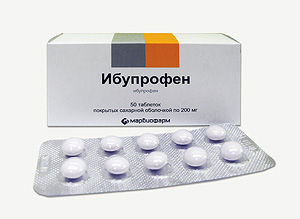 To bring down the temperature from 38.5 ° C, antipyretics based on paracetamol or ibuprofen are shown.
To bring down the temperature from 38.5 ° C, antipyretics based on paracetamol or ibuprofen are shown.
In the presence of cracks in the nipples, local therapy with Purelan-100, Bepanten and other means is used.
Early diagnosis and timely treatment of mastitis avoids taking antibiotics.
Prevention
Prevention of mastitis and lactostasis includes:
- local hardening of the nipples, for example, daily washing the breasts with cool water, rubbing with a coarse towel, starting from the gestation period;
- washing hands and breasts before feeding;
- correct attachment to the breast of the newborn;
- timely elimination of cracks in the nipples - a source of penetration of pathogenic bacteria into the mammary glands;
- feeding in the first month at the first request of the child;
- use of comfortable bras without hard parts cutting into the body.
Breastfeeding should avoid drafts and blows to the chest. If there is a history of mastitis, it is recommended to express milk after each feed (but this is a controversial point). Therefore, preventing milk duct blockages is about correct, frequent and regular feeding. In the presence of stagnant processes in the chest, you should immediately consult a doctor so that lactostasis does not develop into mastitis.
Various pains in any area of \u200b\u200bthe chest are often a serious symptom that requires an in-depth examination. Then, to quickly find out their cause, a modern spectrum of all kinds of diagnostic methods is used. This complex is quite extensive, since pain in the areas of the sternum can indicate not only dangerous diseases, but also malfunctioning of many internal organs.
Some pain sensations are not dangerous at all, in fact, they are typical functional disorders. These include nervous tension or prolonged stressful conditions. However, most pains are urgently needed.
Causes of severe pain in the left and right chest area
Dangerous cardiovascular pathology often provokes the appearance of pain in the left half of the sternum. The list includes ischemic heart disease, dangerous, pericarditis, severe dissecting aortic aneurysm, aortic stenosis, hypertrophic cardiomyopathy, and pulmonary embolism.
With a significant lesion of the aortic arch, patients are worried about pain on the right side in chest... Their intensity varies, from dull aching with dangerous cardiomyopathy to incredibly burning acute pain with serious.
Often, pains provoke all kinds of diseases of the human gastrointestinal tract. Such as: gastric ulcer, reflux esophagitis, cholecystitis, esophageal spasm, hepatic colic and pancreatitis.
Pain from different sides occurs with pathologies of the pulmonary system. Dangerous pneumonia and pneumothorax, pulmonary emphysema, exudative and dry pleurisy, as well as tuberculosis and lung cancer, in addition to chest pains, are accompanied by such additional symptoms as shortness of breath and cough. Many patients often note an increase in chest pain when coughing.
Mental disorders such as psychogenic cardialgia, panic disorders, neurocirculatory dystonia, depression, perventilation and somatic neurosis indicate the nature of chest pain. Given the specific neurological status of patients, in some cases the nature and rather accurate localization of these pains is possible. Often the pain is felt on the right side of the sternum, then on the left.
Diseases of the mammary glands can be bilateral in nature of pain. All kinds of diseases, tumors, mastopathy and mastitis, as well as malignant lesions of the glands, will give unpleasant sensations to a certain area. Severe pain is also provoked by a serious pathology of the spinal column. These experts include scoliosis,.
In some cases, quite severe pain in the chest appears due to various mechanical damage to internal organs. All kinds of bruises and, of course, rib fractures are always accompanied by unpleasant chest pains. When inhaling, pain is observed if the pulmonary pleura is damaged.
It should be noted that the correct diagnosis for various pains in the chest has a specific clear algorithm. A correct examination always begins with a study of the patient's specific complaints and an accurate determination of the nature of his pain. Depending on the nature of the sensations, electrocardiography is prescribed to quickly exclude the formidable ischemic disease hearts.
ECG and ultrasound data of the heart show the normal functioning of an important organ. Further examination includes changes in the nature of pain with different breathing, movements and depending on other factors. An increase in pain during inhalation indicates existing violations of the integrity of the lungs, or about the penetration of air into an important pleural cavity. This condition causes pneumothorax.
With intercostal neuralgia, the pain itself changes during breathing and increases significantly with movement and even. After a complete study of all the patient's complaints and the history of the immediate disease, the doctor conducts the necessary instrumental and laboratory examination to make sure that the preliminary diagnosis is correct.
Burning sensation in the chest
A relatively strong burning sensation in the chest is a rather unpleasant sensation that constantly distracts from all normal daily activities. It interferes with the enjoyment of life, since severe malaise arises. Various diseases of the lungs and heart, the digestive system and mental disorders can be the main causes of burning in the chest.
Heartburn causes certain pain throughout the esophagus. This burning sensation can last from a few minutes to several hours, while it is accompanied by sour belching. With frequent heartburn, it is recommended to undergo an examination first by a therapist, and then by a gastroenterologist. A severe burning sensation can also be the cause of a serious inflammatory disease of the esophagus, in other words. a symptom of reflux esophigitis. In this case, the pain is localized in the lower left side of the chest and is always permanent.
Often, a burning sensation in the chest indicates problems in the functioning of the heart. With angina pectoris, an insufficient amount of blood, nutrients and oxygen is supplied to the heart. Various cholesterol formations can cause this unpleasant condition. It often manifests itself with sufficiently active physical activity.
A burning sensation in the chest in various lung diseases is caused by inflammatory diseases, which are always accompanied by a significant increase in temperature and cough. Pain can be mixed to the left or right, depending on the specific lung affected. during bilateral pneumonia, a burning sensation can be observed on both sides. Also, flu and sore throat provoke the appearance of unpleasant sensations, which always come in combination with a sore throat and high body temperature.
Along with numerous diseases of the internal organs, a dangerous burning sensation in the chest is a symptom of one of the mental disorders, which is accompanied by apathy, loss of appetite and irritability. In this case, a visit to a psychologist is recommended.
Found a mistake in the text? Select it and a few more words, press Ctrl + Enter
Sharp chest pain

A sharp pain in the chest indicates acute illness one of the important internal organs. In such cases, you should definitely seek emergency qualified medical help. Such unpleasant sensations in the form of seizures should be examined more carefully on the basis of patient complaints, history, examination and ECG. Often, the diagnosis is made at the prehospital stage.
The main causes of such pain are serious diseases of the heart and blood vessels, respiratory and digestive organs, as well as ailments of the musculoskeletal system. Acute myocardial infarction, angina pectoris, pericarditis and myocardial dystrophy should be included in this list. In addition, it is necessary to note dissecting aortic aneurysm, pulmonary thromboembolism, as well as pneumonia, pleurisy and spontaneous pneumothorax. There are frequent cases of esophagitis, ulcers and, chest radiculitis, trauma, shingles and neuroses.
Pressing chest pain
Unpleasant oppressive pain on the left side behind the sternum is the main symptom of angina pectoris. It is given to the left shoulder blade, arm or shoulder. The pain is intense enough that it instantly makes the patient freeze in place with a firmly pressed hand to the heart area. It should be mentioned that additional symptoms of an attack are pallor and cold extremities, increased heart rate and increased arterial pressure. Often, such attacks can occur after very active physical activity, when the heart's need for oxygen consumption increases significantly.
At the slightest suspicion of dangerous angina pectoris, it is recommended to immediately contact a cardiologist or at least a therapist. You will be scheduled for a routine examination that includes blood and urine tests, and an EKG. Basic treatment combined with diet and a healthy lifestyle allows the patient to quickly regain their well-being.
Dull chest pain
Dull pain can be the result of various ailments. But it is usually a symptom of pericarditis, which is a severe inflammation of the serous outer lining of the heart. This disease often indicates complications after infections. Dull, monotonous pain behind the sternum is of a moderate nature, from time to time becoming strong, reminiscent. Such unpleasant sensations are always localized on the left side of the chest.
Occasionally, such pains are combined with chills and fever, as well as general malaise and a significant change in general analysis blood. Only a cardiologist, after the necessary examinations, can diagnose and prescribe the correct treatment.
Fever and cough with chest pain
It has been proven if the characteristic pain in the chest of a person is accompanied by a cough and a significant increase in body temperature. then we can talk about serious inflammatory processes in the lungs. A sign of complication is the involvement in the process of pleural inflammation. Often, pain and coughing occur with tracheobronchitis, while coughing up difficult sputum is observed. Inflammation of the lungs is characterized by severe pain with coughing, sudden fever and chills.
From the very first days, severe shortness of breath often appears, heart rate increases and heart rhythm is disturbed. Dry pleurisy, like pneumonia, in most cases, is treated with the appointment of certain antibiotic therapy. Pleural puncture may be indicated if necessary.
Deep chest pain (pain under the chest) is often caused by:
- dry or exudative pleurisy - inflammation of the pleura (connective tissue sheets that cover the lungs and ensure their mobility);
- hydrothorax - accumulation of fluid in the pleural cavity;
- empyema of the pleura - accumulation of pus in the pleural cavity;
- pneumothorax - accumulation of air in the pleural cavity;
- pleuropneumonia - inflammation of the lungs, passing to the pleura;
- acute tracheitis or inflammation of the trachea - the cause of pain in the throat and chest;
- foci of pneumonia and tuberculosis located close to the pleura, abscesses;
- dissecting aortic aneurysm;
- aortitis - inflammation of the aorta;
- thromboembolism - blockage of the branches of the pulmonary artery by a thrombus or embolus.
Symptoms specific to your condition:
Probable diseases:
Cholelithiasis
Symptoms: sharp, constricting pain in the chest, in the right side below the chest, radiating to the neck and collarbone
Sharp, constricting pain in the chest, in the right side below the chest, radiating to the neck and collarbone, characteristic of diseases of the gallbladder, in particular for gallstone disease and biliary colic... A painful attack begins 3-4 hours after ingestion of fatty or spicy foods, more often in the late evening or at night. In search of a comfortable position, the patient rushes about in bed or wanders around the house all the time. Pressing pain in the chest increases and becomes burning, then weakens, becoming dull. Often an attack is accompanied by nausea, vomiting with an admixture of bile, bloating and diarrhea. It ends as unexpectedly as it began when a stone blocking the duct "falls" into the intestine. Simultaneously with the disappearance of chest pain, a large amount of light urine is excreted.
Diagnosis with severe right chest painand suspected cholelithiasis: analysis of the clinical picture, ultrasound of the liver and gallbladder, cholecystography, X-ray examination of the stomach and intestines.
First aid for chest pain, what to do with biliary colic: rest, cold on the right hypochondrium. It is urgent to call the ambulance team and escort the patient to surgical hospital department. It is forbidden to take painkillers before the arrival of the doctor, as this can hide the true picture of the disease.
Acute pneumonia
Symptoms: chest pain when breathing; high body temperature; chills; rapid and shallow breathing
Chest pain on breathing, high fever body, chills, rapid and shallow breathing typical for acute pneumonia... Croupous pneumonia is especially pronounced, in contrast to small focal pneumonia, which can be manifested only by weakness, night sweats and a slight increase in temperature. With croupous pneumonia, there is reddening of the cheeks, blueing of the fingertips and mucous membranes, herpetic eruptions on the lips are common, severe pain in the chest, the patient has difficulty breathing. At first, the cough is dry in nature, then thick, viscous, jelly-like sputum, often brown or mixed with pus, begins to stand out.
x-ray examination is of decisive importance.
in the presence of respiratory failure - calling the ambulance team and delivering the patient to the pulmonary department of the hospital.
Acute tracheitis
Symptoms: moist cough; high body temperature; sharp pain in the middle of the chest, behind the sternum, aggravated by coughing; dry cough
Cough and sharp pain in the middle of the chest, behind the breastbone, aggravated by coughing, increased body temperature characteristic of acute tracheitis... Acute tracheitis often occurs with ARVI, including influenza, and is accompanied by all manifestations of a respiratory infection. The disease begins with an increase in body temperature, weakness, and increased fatigue. A little later, a runny nose, a feeling of soreness, perspiration or pain in the throat and chest appears. The cough, at first dry, harsh and painful, later gives way to a wet one, with discharge of mucopurulent sputum.
Diagnostics for severe cough, sore throat and chest caused by acute tracheitis based on an analysis of the clinical picture of the disease and the results of a clinical study (examination, tapping and listening of the chest). With a protracted course of tracheitis, an X-ray examination of the lungs is shown.
First aid for chest pain and acute tracheitis: plentiful warm alkaline drink, for example, mineral water, milk, decoctions of expectorant fees, distracting procedures (hot foot baths, mustard plasters), alkaline inhalations (soda-oil). It is recommended to call the district therapist on house.
Lung or pleural cancer
Symptoms: persistent chest pain, stabbing, encircling, aggravated by coughing
Dry pleurisy
Symptoms: pain under the ribs, worse with a deep breath; dry cough
Dry cough, chest pain when breathing, pain under the ribs, worse with a deep breath, typical for dry pleurisy... Dry pleurisy often develops with tuberculosis, pneumonia, lung abscesses, pulmonary infarction, chest injuries, tumors passing to the pleura and other diseases. With pleurisy, there is a stabbing pain in the chest, which increases with deep breathing and tilting the body to the healthy side, and subsides in the lying position on the sore side. It is because of severe pain in the chest that patients lie mainly on their backs or on their sore side. The body temperature may be somewhat elevated, weakness, night sweats are noted. When examining the chest, you can notice some lag in the movements of the sick half from the healthy one.
Examination, palpation and listening of the chest, X-ray examination. maintaining the position on the sore side, taking painkillers. It is recommended to seek medical help from a general practitioner or pulmonologist.
Exudative pleurisy
Symptoms: pain under the ribs, worse with a deep breath; heat; dyspnea; dry cough
Severe dry cough, chest painunder the ribs, sometimes shortness of breath characteristic of exudative pleurisy. Exudative pleurisy is an inflammation of the pleura, accompanied by effusion of fluid into the pleural cavity and compression of part of the lung. The disease can occur with pulmonary tuberculosis, chest injuries, lung tumors. At first, while the effusion is in chest cavity a little, breathing problems do not arise, later, when a large amount of fluid accumulates, shortness of breath appears, chest pain, it is difficult to breathe. Body temperature with exudative pleurisy is increased, there is weakness, fatigue, night sweats. Examination of the chest often reveals a bulging of the intercostal spaces on the affected side and a lag in breathing of the affected part of the chest.
Examination, probing, tapping and listening to the chest, X-ray examination.
If there are signs of respiratory failure - call the ambulance team and transport the patient to pulmonary department hospitals, with chest pain and no breathing problems - call the local doctor at home.
Chest pain is one of those symptoms that cannot but attract attention. Up to 60% of women regularly face this problem, experiencing painful sensations of varying duration and intensity. Often they are accompanied by an increase in body temperature and general malaise, which prompts patients to not at all bright thoughts.
If the pain is accompanied by an increase in body temperature - urgently consult a doctor!
What should you be afraid of when you have breast pain and fever? What symptoms should you see a doctor immediately? This article describes five causes of chest pain that can be accompanied by a febrile reaction. Some of them are completely harmless and are associated with changes in hormonal levels, while others require immediate medical care.
 Puberty is a special period that is rich in all sorts of surprises, including unpleasant ones. Cyclic mastodynia, or regular pain in the breasts and nipples during menstruation, is one of them.
Puberty is a special period that is rich in all sorts of surprises, including unpleasant ones. Cyclic mastodynia, or regular pain in the breasts and nipples during menstruation, is one of them.
During puberty, the child's body is reconstructed to an adult "mode of functioning", and this is primarily due to the establishment of the correct balance of sex hormones. This is not achieved immediately: the endocrine system takes a very long time to put itself in order, which manifests itself in various symptoms. Teenage aggression, irritability, skin problems, nausea, sweating are all just flowers compared to cyclical mastodynia.
Against the background of an uneven increase in the concentration of estrogen and progesterone in the blood, increased breast growth occurs. The end sections of the mammary gland branch and increase in size many times, its ducts lengthen, and the fatty layer accumulates. Everything would be fine, but nerve fibers do not always keep pace with such rapid growth. They seem to be taut and constantly irritated, which causes a burning, stabbing or aching chest pain.
The situation deteriorates noticeably just before the onset of menstruation. At this time, the highest concentration of prolactin is observed in the blood, the terminal sections of the mammary gland are maximally expanded, and the nerve fibers are stretched to the limit. The pain in the chest becomes unbearable, which in especially severe cases is accompanied by an increase in body temperature. There may be a burning sensation in the chest and nausea. Working capacity is completely lost, the girl is sick, and pain becomes the only filling of her life.
As a rule, immediately after the onset of menstruation, the clinical picture becomes much better. Unfortunately, there is no effective treatment for cyclic mastodynia that can remove all symptoms. Non-steroidal anti-inflammatory drugs, which are usually prescribed for headache and toothache, can alleviate the condition, but their effect is not sufficiently pronounced. It is encouraging that for most girls, the cyclical mastodynia goes away on its own after a clear cycle has been established. Then the temperature, nausea, burning and chest pain go away.
Traumatic damage to the breast is an uncommon situation. Strange as it may sound, but when falling on ice, many women would prefer to break an arm or a leg rather than painfully hitting their chest. Despite this, the mammary gland is not always protected from injury, and it can be seriously damaged in the following situations:
- falling face down;
- road traffic accidents and other accidents;
- collapse of buildings and stay under the rubble;
- mine blast injury;
- street assault and other accidents.
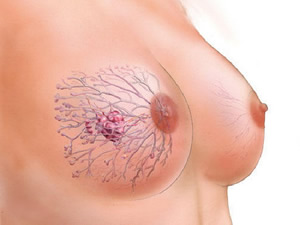 Regardless of the mechanism of injury, damage occurs to the adipose tissue that makes up most of the breast. After some time, this non-viable tissue disintegrates - fatty necrosis. In this case, there is intense pain in the chest, soreness when feeling, the body temperature often rises, especially when the microbial flora joins. Many patients feel sick, because the decay products of injured tissue have a toxic effect on the body.
Regardless of the mechanism of injury, damage occurs to the adipose tissue that makes up most of the breast. After some time, this non-viable tissue disintegrates - fatty necrosis. In this case, there is intense pain in the chest, soreness when feeling, the body temperature often rises, especially when the microbial flora joins. Many patients feel sick, because the decay products of injured tissue have a toxic effect on the body.
Subsequently, the area of \u200b\u200binjury is replaced by scar tissue, due to which the chest itches, a burning sensation appears, a lump forms or the mammary gland changes its shape. The skin of the breast becomes lumpy, the nipple is often retracted, which can mimic cancer. Often, even in the long-term period of injury, there may be a burning sensation and pulling pain, especially in the areola and in the area of \u200b\u200binjury. The bump does not always disappear. Sometimes it remains, representing a subcutaneous scar of connective tissue.
The diagnosis of breast trauma and fatty necrosis is difficult to make. For this, it is extremely important to know the history. In other words, the patient should describe the circumstances of the injury to the doctor. Treatment of this condition is complex and includes both medical methods and surgical intervention.
Lactational mastitis
Most common reason pain in the mammary gland, in which the body temperature rises, is lactational mastitis, or inflammation of the breast. For the development of this disease, a combination of several factors is needed:
- Stagnant milk (mom refuses to breastfeed or does not express milk).
- Cracks and other injuries to the nipple and areola.
- Lack of breast hygiene.
- The presence of diseases in a woman, which are accompanied by a decrease in immunity and a general weakening of the body.
Milk that stagnates in the mammary gland is a very favorable environment for the development of pathogenic flora. It enters the ducts and end sections of the gland through the entrance gate, the role of which is played by the damaged nipple. As a result, inflammation occurs in the gland tissue, which is manifested by the following symptoms:
- Intense pain, which may be burning, bursting, pulling and throbbing;
- Swelling of the chest;
- Redness of the breast skin;
- Discharge from the nipple, including purulent;
- Sometimes the chest itches, possibly burning.
- Symptoms of a systemic inflammatory reaction: body temperature rises, often nausea, sweating, weakness and general malaise appear.
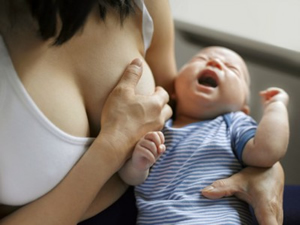 Typically, mastitis affects only one breast. Not to mention that it is better not to reach such a state at all, it is important not to start the disease and consult a doctor as soon as possible. If you postpone the consultation of a specialist, then an abscess (abscess) will form in the breast tissue, the condition will be even worse, and this is fraught with the development of sepsis.
Typically, mastitis affects only one breast. Not to mention that it is better not to reach such a state at all, it is important not to start the disease and consult a doctor as soon as possible. If you postpone the consultation of a specialist, then an abscess (abscess) will form in the breast tissue, the condition will be even worse, and this is fraught with the development of sepsis.
Treatment for mastitis necessarily includes powerful antibacterial and detoxification therapy. It allows you to reduce the manifestations of intoxication syndrome (weakness, sweating, nausea). The baby is temporarily transferred to artificial feeding, and mothers are provided with regular expression of infected milk from the inflamed breast. When an abscess appears that looks like a lump in the thickness of the breast, surgery is required.
Breast tuberculosis
Tuberculous lesions of the mammary gland are extremely rare, and precisely because of this, it is very poorly diagnosed. In the vast majority of cases, this disease develops in women who have been suffering from pulmonary tuberculosis for a long time. The defeat of the mammary gland is secondary and indicates the neglect of the condition, as well as inadequate treatment.
Breast tuberculosis is manifested by the following symptoms:
- Aching, bursting, or pulling pain in the chest.
- Deformation of the mammary gland: lumps, retractions, changes in the shape of the nipple.
- Ulcers may develop on the skin of the chest.
- Unusual nipple discharge.
- Lung symptoms: cough, shortness of breath, chest pain, hemoptysis may occur.
- Signs of general intoxication: body temperature rises, appetite disappears, sweating appears, general malaise, often nausea.
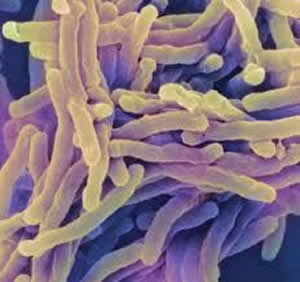 Diagnosis of breast tuberculosis is based on chest x-ray and breast biopsy. Treatment is long-term (up to 1 year or more) and includes a combination of several heavy drugs. Sometimes surgery is required up to the removal of the breast.
Diagnosis of breast tuberculosis is based on chest x-ray and breast biopsy. Treatment is long-term (up to 1 year or more) and includes a combination of several heavy drugs. Sometimes surgery is required up to the removal of the breast.
Additional use of symptomatic therapy is possible if a woman is worried about burning, pain, nausea or other symptoms of the disease.
Mammary cancer
Unfortunately, in our country the situation with breast cancer is rather depressing. Surprisingly, many women start their illness, which has extremely striking external manifestations. Because of this, the prognosis for life is significantly worsening, and patients go to the doctor at the later stages, when nothing can be done.
A serious suspicion of breast cancer should arise if the following symptoms are observed:
- The nipple is retracted, the shape of the breast has changed;
- The chest hurts, and the pain can be burning, pulling, aching, stabbing - in other words, of absolutely any nature;
- An unusual lump is felt in the thickness of the chest;
- Deteriorated appetite, weight loss, nausea, general malaise, subfebrile temperature (37,0 – 37,9);
If these symptoms appear, you should immediately consult a doctor. Although even benign breast diseases can have such a clinical picture, timely detection of breast cancer is the surest way to a speedy recovery and a life without suffering.
